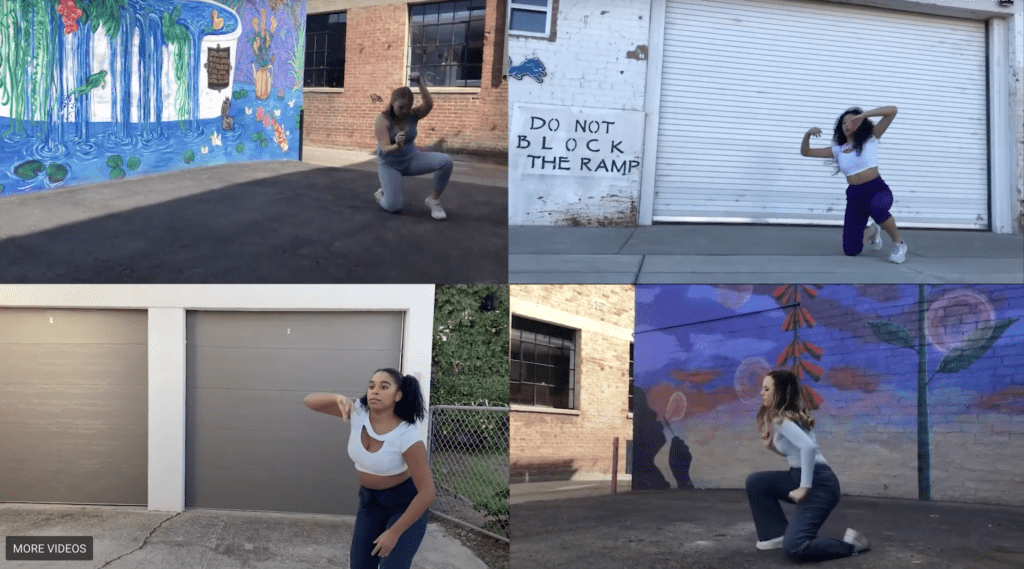
To say the LMU College of Communication and Fine Arts felt challenged last March when remote instruction was mandated and the lights went dark on our performance and exhibition spaces is an understatement. Experiential, embodied and collaborative learning is such a key component of the many disciplines within CFA, and as our studio classes, rehearsals, exhibitions, debates, speaker series, performances, and recitals were initially threatened due to the coronavirus pandemic, many worried that some critical academic experiences simply could not be replicated in the online environment. What we learned instead is that our departments are remarkably resilient, discovering new ways of engaging performance and experiential events in ways that have taught students new skills, and attracted thousands of new audience members from all over the world.
Live Performance Moves Online
With only a few days to pivot from in person to remote learning, all performances were quickly challenged for the second half of the spring 2020 semester. Senior art exhibitions were still held online using virtual gallery spaces, but live performances at first seemed to be out of the question. That is, until the critical and creative crew of LMU Theatre Arts decided to forge ahead and reinvent their theatre process, by presenting the annual Shakespeare on the Bluff festival live on Zoom, utilizing clever set design, acting techniques, and props to locate the actors and connect them on-screen. Audiences clearly thirsted for live arts during their own self-isolation, as nearly 2,000 households from around the country logged in to view the festival.
The live performances only improved from there, with plays being presented both live and asynchronously, culminating in a live end-of-year performance of Lysistrata, in which students and staff worked together to create a scale model of the Acropolis. According to director and professor of theatre arts Katharine Noon, “We moved outside our normal production areas to develop video content, integrate miniatures and puppetry and develop uses for green screens. Our students had very positive attitudes throughout the whole process and grew to develop very practiced ways of working on Zoom and with video. For me personally, what stood out was the way our staff and faculty designers and builders created a world within a world and involved so many students in the process. The teamwork on all levels was inspiring.”
Similarly, LMU Dance initially had great reservations about presenting their end of semester dance concert, a tradition that goes back many decades and is an important culmination of the academic process for dance students. According to Rosalynde LeBlanc Loo, chair of dance, while the learning curve was steep, the payoff was enormous.
“In preparing for our Fall Dance Concert ‘Together and Apart,’ students learned how to configure personal devices into professional tools for filming themselves, exploring optimum conditions of location and lighting,” said Loo. “I think the process of creating this digital production is one of my highlights of the semester because it is, quite frankly, an example of taking lemons and making lemonade. We were all dealt a blow when we learned that the fall term would remain remote. But then the question quickly arose: well, what can happen? ‘Together and Apart’ stands as evidence of what can happen when students and faculty don’t give up, rather they find a way. It is the essence of what it means to be an artist.”
Collaborations Now Span Thousands of Miles
For the Music department, a key focus in developing their fall events schedule was finding ways for music students and alumni to share their gifts and talents through public performance. A new virtual concert series was developed called “Second Thursdays,” which is a free and open and features current students, alumni, and faculty performing from their remote locations. Other initiatives include the Chamber Concerts, and the Winter Choral Concert, which featured a collaboration with El Café Chorale from the Costa Rican Choral Institute, and garnered nearly 3,000 views thus far on YouTube. Faculty and students have found new technology solutions to allow simultaneous remote rehearsals to still occur, replicating the in-person experience of shared music-making as much as possible.
“Our resolve to hold onto this special community is stronger than ever. I believe when you create something of beauty, we are engaging in a worthwhile endeavor that adds value to the common good, and we need all the good we can get these days,” said T.J. Harper, chair and director of choral activities at LMU. “This semester, our community continued to expand when LMU Choirs participated in an international collaboration as we traveled virtually to Costa Rica, to prepare two songs for our Winter Concert. This special project allowed our singers to expand the LMU choral community, as we welcomed our new friends from Costa Rica into the LMU Lion Pride.”
The Art and Art History Department, in addition to finding inventive online gallery spaces to showcase student work, continued its KaleidoLA Speaker Series, taking advantage of the Zoom format to invite a variety of artists and curators to speak to LMU students, without worrying about constraints of location. Typically, the speaker series only invites local speakers, but last semester, artists from all over the United States were able to engage with students with ease, opening up a new range of possibilities for guest speakers; with a particular commitment to expanding the college commitment to diversity, equity and inclusion in our guest artists. In the same vein, the department of communication studies hosted a colloquium series featuring a speaker from New York who sparked a fascinating conversation on populism and the political right.
An Opportunity for Growth
And the lessons learned by students in the process was equally inspiring. As a result of remote performance and instruction, “Students have had to become very independent and clear about their personal performance practices and, as a result, I have noticed an increase in artistic discipline,” said Noon. “When teaching performance, I’m always talking to our students about the importance of listening. I have never seen this aspect of the acting process sink in so deeply as it did with actors having to perform with each other over Zoom. There were so many things taken away from the actor such as being in the same room together, movement and sometimes seeing one another, that the need to listen for nuance and to truly hear one another became heightened. I truly believe that this experience will make them stronger performers and more self-sufficient and confident actors.”
One surprising off-shoot of remote learning that some faculty have observed is an increase in intimacy among students who are working and learning together. “I have heard so many stories of classroom communities actually growing closer in the remote period rather than more distant. And we have grown closer in the profound ways that don’t typically happen during in-person instruction,” said Loo. “The physical distance has seemed to spur greater attention to one another as individuals since we can quite literally see into each other’s homes. We saw the struggles – someone having their camera off because they are also managing the care for a sick family member. And we saw the joys – a new puppy bounding into the frame and all the revitalizing energy that brings to the owner. These are the outer edges of our personhood that don’t typically come into the in-person classroom space, but they are still and always the backdrops against which we are attempting to learn and to teach.”
Without access to the shop tools and labs of the Studio Arts department, faculty instead asked students to get creative with materials, often using found objects and unexpected tools to conceive innovative art projects that might not have otherwise been considered. “Overall, I was very impressed with what could be accomplished within a virtual learning environment,” said Samir Naimi, adjunct professor of studio arts. “It allowed us a sort of freedom to do things differently than what I was used to in a typical classroom setting, and I am surprised to say that I do see that there are quite a few benefits from it when it is done properly.”
Inviting New Audiences
The LMU College of Communication and Fine Arts has discovered a truly national audience by exploring online performance modalities to the fullest extent, inviting new viewers from all over the world into our virtual spaces – something that would have been conceived as impossible under regular circumstances. We’ve seen students delighted to finally share their performances with family members in other parts of the world –who normally wouldn’t be able to come to LMU are now able to meet us in our places of performance.
While we all long to return to our in-person spaces of engagement and performance, the unexpected surprises and delights of CFA during remote learning have been considerable and meaningful in so many ways.
View all upcoming Spring 2021 CFA department performances and events HERE



